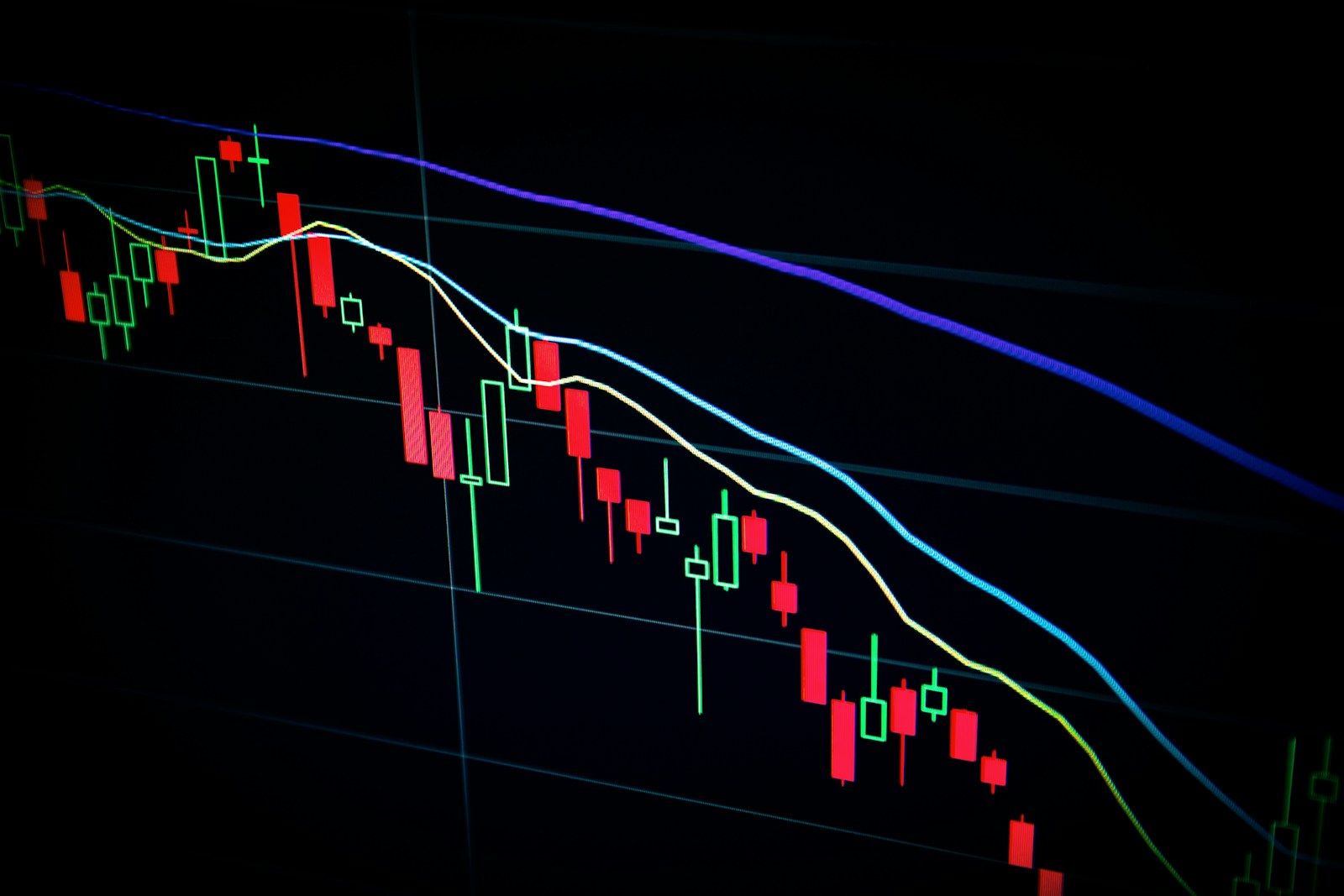Enter the market only after confirming clear signals of upward momentum. Data shows that purchasing assets during confirmed uptrends increases the probability of gains by over 60% compared to random entry points. Conversely, exiting positions as soon as technical indicators signal weakening momentum helps preserve capital and lock in profits efficiently.
Decision-making relies heavily on aligning actions with market cycles rather than reacting to noise. A disciplined approach using moving averages or volume spikes can clarify optimal moments to acquire or dispose of holdings. For example, setting predefined thresholds for price retracements allows consistent responses without emotional bias.
A robust strategy combines objective rules with flexibility to adapt based on evolving conditions. Avoid waiting for perfect clarity; instead, employ a stepwise plan that adjusts exposure incrementally. This minimizes risk while capitalizing on favorable trends. Remember, timing is about probability management–acting neither too early nor too late enhances overall performance.
Investment timing: when to buy and sell
Optimal entry points in the market rely on a well-defined approach that balances risk with potential gains. An effective strategy involves analyzing historical price trends, volume shifts, and volatility indexes to determine favorable conditions for acquisition. For example, during periods of consolidation or after significant corrections, assets often present attractive value propositions due to suppressed prices relative to their intrinsic worth.
Conversely, exit decisions should be guided by signals such as momentum exhaustion, resistance levels on technical charts, or fundamental changes affecting the asset’s underlying value. Utilizing stop-loss orders and trailing mechanisms can help preserve capital and lock in profits without requiring constant monitoring. A disciplined plan reduces emotional bias, which is critical given the market’s susceptibility to sentiment-driven swings.
Technical Indicators Supporting Market Entry and Exit
Utilizing tools like the Relative Strength Index (RSI), Moving Average Convergence Divergence (MACD), and Bollinger Bands can enhance timing precision. For instance, an RSI below 30 may indicate oversold conditions conducive to acquiring positions, while values above 70 suggest overbought states that might warrant liquidation. Similarly, MACD crossovers confirm trend reversals that align with strategic adjustments.
- RSI: Detects momentum extremes signaling potential turning points.
- MACD: Identifies trend direction changes through moving average interactions.
- Bollinger Bands: Measure volatility expansions or contractions indicating breakout opportunities.
A case study from mid-2021 showed that Bitcoin’s dip below its 200-day moving average coupled with an RSI near 35 marked a strong accumulation phase before a substantial upward rally. Traders who adhered to these indicators maximized returns by entering during temporary weakness rather than chasing peaks.
Fundamental catalysts also play a pivotal role in decision-making frameworks. Regulatory announcements, technological upgrades within blockchain networks, or macroeconomic data releases can trigger rapid price adjustments. Staying informed about such events enables investors to anticipate shifts rather than react post-factum.
The synthesis of quantitative data with qualitative insights forms a robust foundation for determining opportune moments for portfolio rebalancing. Embracing this dual perspective encourages consistent evaluation instead of sporadic speculation, fostering long-term growth aligned with individual risk tolerance and objectives.
Identifying Market Entry Points
Optimal entry into the cryptocurrency market requires a clear strategy based on technical indicators and market sentiment rather than guesswork. Using tools such as moving averages, Relative Strength Index (RSI), and volume analysis helps determine favorable moments to acquire assets. For example, a crossover of the 50-day moving average above the 200-day average, known as a golden cross, often signals upward momentum suggesting a suitable moment for acquisition.
Conversely, oversold conditions reflected by an RSI below 30 can indicate undervaluation and potential rebound areas where purchasing could yield benefits. It is essential to confirm these signals with volume spikes or support levels to avoid traps during volatile periods. Combining multiple technical measures improves accuracy in pinpointing advantageous points for entry.
Technical Signals and Market Patterns
A disciplined approach involves identifying chart patterns such as ascending triangles or double bottoms that historically precede price increases. These formations provide insights into buyer interest strengthening over time, signaling promising opportunities to add assets. For instance, Bitcoin’s consolidation within an ascending triangle before its 2020 rally demonstrated this principle effectively.
On the flip side, recognizing bearish patterns like head and shoulders or rising wedges can suggest caution or potential exit opportunities. Understanding these configurations enables investors to anticipate possible reversals or pauses in momentum and adjust their portfolio moves accordingly.
Implementing a systematic plan incorporating stop-loss orders based on volatility measurements enhances risk management around entry points. Monitoring Average True Range (ATR) allows setting dynamic thresholds that adapt to changing market conditions, protecting capital while maintaining flexibility in position adjustments.
An alternative approach focuses on macroeconomic factors influencing demand-supply dynamics within blockchain ecosystems. Regulatory developments, network upgrades, or institutional adoption announcements frequently create windows for strategic asset acquisition ahead of price appreciation phases.
This multifaceted methodology encourages balancing quantitative data with qualitative insights for superior decision-making regarding asset accumulation and liquidation intervals. Maintaining discipline through pre-defined entry criteria helps mitigate emotional biases common during market fluctuations.
Recognizing Optimal Exit Signals
Identifying the precise moment to liquidate a cryptocurrency holding requires analyzing both quantitative indicators and market sentiment. Key technical signals include sustained breaches of moving average support levels, such as the 50-day or 200-day moving averages, often suggesting a shift from bullish to bearish momentum. Volume analysis complements this by confirming whether price drops are supported by increasing trade activity, signaling genuine investor withdrawal rather than short-term fluctuations.
Another critical component involves evaluating relative strength index (RSI) values; an RSI consistently below 30 may indicate oversold conditions, but a rapid decline from overbought territory (above 70) can serve as an early warning for a potential downturn. Combining these with trendline breaks and candlestick reversal patterns enhances decision-making accuracy, enabling traders to execute exit strategies before significant value erosion occurs.
Integrating Strategy with Market Dynamics
A well-structured approach incorporates predefined criteria aligned with portfolio goals and risk tolerance. For example, setting trailing stop-loss orders based on percentage declines protects gains while allowing room for natural volatility. Applying Fibonacci retracement levels helps determine probable support zones where liquidation might be prudent if prices fail to hold. These tools provide objective frameworks that reduce emotional bias in determining the appropriate moment to divest assets.
Consider the case study of Bitcoin’s correction phases: during the 2017 bull run climax, many analysts recommended partial exits around $19,000 due to weakening volume and divergence in momentum indicators. Investors who adhered to systematic exit rules preserved capital ahead of subsequent steep declines exceeding 80%. Such examples underscore that disciplined execution of exit protocols grounded in technical data outperforms reactive decisions driven by fear or greed.
Using Indicators for Timing in Cryptocurrency Markets
Accurate decision-making on when to enter or exit positions in cryptocurrency markets relies heavily on the use of technical indicators. These tools analyze historical price data and volume patterns, providing signals that can clarify optimal moments for acquisition or liquidation. Among the most effective are Moving Averages (MA), Relative Strength Index (RSI), and Bollinger Bands, each offering unique insights into market momentum and volatility.
For instance, a commonly applied strategy involves observing the crossover of short-term and long-term moving averages. When the 50-day MA crosses above the 200-day MA–a scenario often called the “golden cross”–it suggests upward momentum, signaling a potential opportunity to acquire assets. Conversely, the “death cross,” where the 50-day falls below the 200-day, may indicate declining strength and prompt consideration of divestment. Employing these moving averages helps filter out noise, enabling clearer evaluation of trend sustainability.
Key Technical Indicators Explored
The Relative Strength Index (RSI) gauges overbought or oversold conditions by measuring recent price changes on a scale from 0 to 100. An RSI above 70 typically flags an asset as overextended upwards–potentially suggesting prudence before committing capital–while values under 30 hint at undervaluation and possible rebound opportunities. This indicator assists traders in assessing whether current price levels justify entering or exiting positions based on momentum extremes rather than arbitrary timing decisions.
Bollinger Bands add context by plotting volatility boundaries around a simple moving average. When prices consistently touch or breach the upper band, it reflects heightened buying pressure; a move near or below the lower band signals selling intensity. Combining Bollinger Bands with volume analysis enriches interpretation: increased volume during band breaks confirms stronger conviction behind moves, aiding in distinguishing fleeting spikes from meaningful trends worth action.
Case studies reveal that employing multiple indicators simultaneously enhances accuracy in market timing decisions. For example, during Bitcoin’s notable surge in late 2020, RSI readings exceeded 80 repeatedly while prices hovered near upper Bollinger Bands; however, sustained high volume confirmed genuine bullish strength rather than mere speculative excess. Traders who integrated these signals avoided premature exits and maximized returns by recognizing valid continuation phases within volatile environments.
In practical terms, building a personalized indicator framework involves testing combinations against historical data to identify which metrics best align with individual risk tolerance and trading goals. Beginners are encouraged to start with simpler tools like moving averages paired with RSI before incorporating more complex overlays such as Fibonacci retracements or MACD histograms. Over time, understanding how these components interact fosters confidence in making informed calls about ideal points for initiating or liquidating holdings within fluctuating cryptocurrency markets.
Avoiding Common Timing Mistakes: Strategic Insights
Precise judgment regarding the optimal moment to initiate or exit a position significantly enhances portfolio performance. Recognizing that decision errors often arise from emotional biases or misinterpretation of market signals allows for refinement of entry and exit tactics.
For example, relying solely on short-term price momentum without considering blockchain network activity or on-chain metrics can lead to premature transactions. Incorporating multi-dimensional data such as transaction volume spikes, hash rate fluctuations, and protocol upgrades strengthens the overall approach.
Key Technical Takeaways and Forward-Looking Implications
- Adaptive frameworks: Utilizing algorithmic models that adjust to volatility regimes reduces reactive mistakes during high turbulence phases.
- Signal integration: Combining fundamental blockchain health indicators with market sentiment analytics refines the timing of asset acquisition or liquidation.
- Risk control mechanisms: Employing dynamic stop-loss orders tied to real-time network stress levels mitigates downside risks more effectively than static thresholds.
- Longitudinal data analysis: Examining historical cycles of token distribution events versus price reactions informs better strategic planning for transactional decisions.
The future trajectory points toward increasingly sophisticated tools leveraging machine learning on blockchain-derived datasets, enabling more granular identification of optimal moments to commit resources or disengage positions. This evolution promises enhanced clarity in choosing when to engage markets while minimizing cognitive errors related to impulsive moves.
As decentralized ecosystems mature, integrating cross-chain analytics with macroeconomic indicators will further elevate strategic precision. Investors who adapt their methodologies accordingly will gain a decisive edge in capitalizing on emergent opportunities while avoiding pitfalls commonly linked with suboptimal execution timing.





